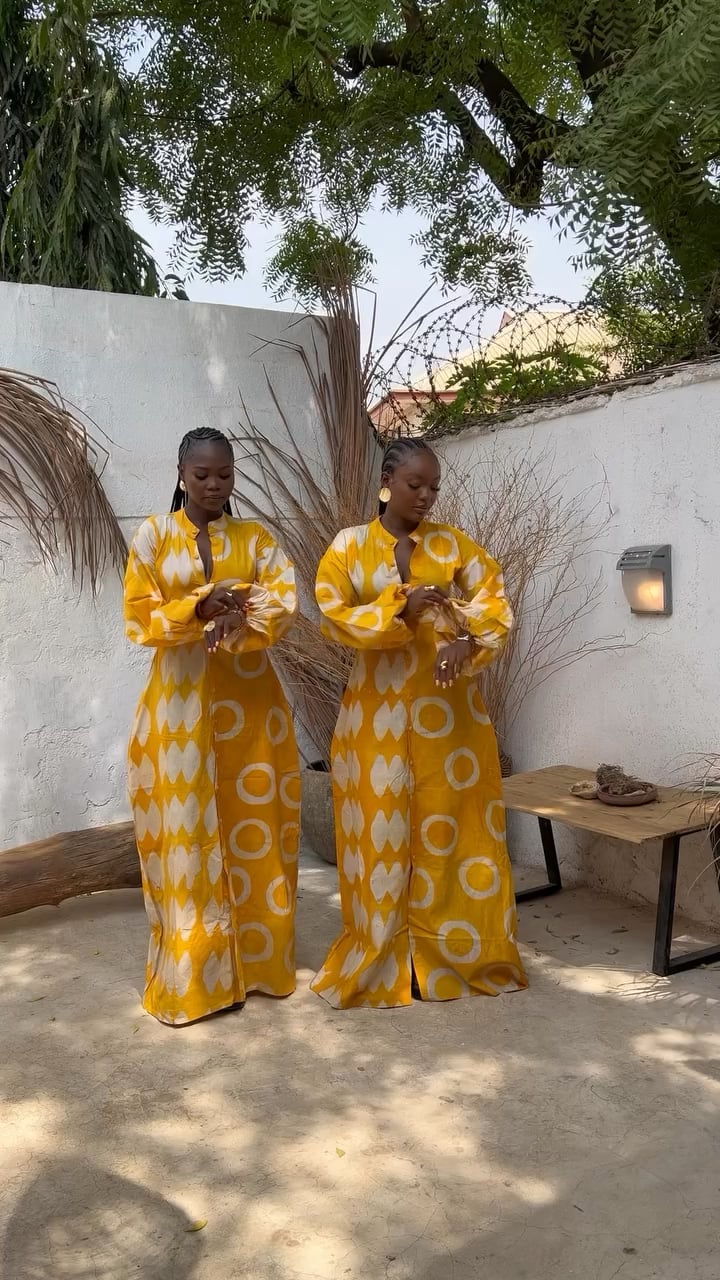Adire, a traditional textile art originating from Nigeria, holds a rich cultural significance, especially among the Yoruba people. Renowned for its striking indigo-dyed patterns and intricate designs, Adire encapsulates the essence of Nigerian heritage and craftsmanship. The artistry behind Adire involves a meticulous process of resist-dyeing techniques, with one of its prominent methods being the renowned “tie and dye” approach. In this method, artisans skillfully tie sections of fabric before dyeing, resulting in captivating and unique patterns that define Adire textiles.
Adire’s roots trace back to the Yoruba community in Nigeria, where it has flourished as a revered art form for generations. The name “Adire” itself holds profound meaning, translating to “tie and dye” in the Yoruba language. This linguistic connection underscores the intimate relationship between the art form and its cultural origins, showcasing the intrinsic bond between language, art, and identity within the Yoruba tradition.
Adire serves as a visual narrative of Nigeria’s vibrant cultural tapestry, reflecting the intricate interplay of history, artistry, and community heritage.
Across Nigeria and beyond, Adire has not only become a symbol of artistic excellence but also a testament to the resilience and creativity of the Yoruba people. The art of Adire is not merely about creating beautiful textiles but also about preserving age-old techniques and passing down ancestral knowledge from one generation to the next. Through the intricate designs and dyeing processes, Adire weaves together stories of tradition, innovation, and identity, embodying a cultural legacy that transcends time and borders.
The allure of Adire extends beyond its aesthetic appeal; it embodies a sense of communal pride and unity within the Yoruba society. Artisans and enthusiasts alike view Adire as more than just a textile art form; it represents a shared heritage and a collective identity that binds individuals together through a common appreciation for tradition and craftsmanship. The process of creating Adire textiles often involves collaborative efforts within communities, fostering a sense of camaraderie and cultural cohesion that resonates deeply with those involved in its production.
Adire exemplifies the beauty of cultural preservation and the power of art to encapsulate history, identity, and community spirit within its intricate patterns and designs.
As Adire continues to captivate art enthusiasts and cultural connoisseurs worldwide, its significance transcends mere aesthetics. The art form serves as a cultural ambassador, bridging gaps between different communities and fostering cross-cultural dialogue through the universal language of art. In a globalized world where traditions risk being overshadowed by modernity, Adire stands as a poignant reminder of the importance of heritage preservation and the celebration of diverse cultural expressions.
The resurgence of interest in Adire among younger generations reflects a growing appreciation for traditional arts and a reclamation of cultural roots in a rapidly changing world. Through workshops, exhibitions, and social media platforms, a new wave of artisans and advocates are revitalizing the art of Adire, breathing new life into age-old techniques while infusing contemporary influences to adapt to evolving tastes and preferences. This fusion of tradition and innovation not only ensures the continuity of Adire as a living art form but also paves the way for its enduring legacy in the global cultural landscape.
In conclusion, Adire stands as a testament to the enduring legacy of cultural heritage and the transformative power of art to transcend boundaries and unite communities. Through its intricate patterns, vibrant colors, and rich symbolism, Adire weaves together a tapestry of tradition, creativity, and identity that resonates far beyond the borders of Nigeria. As we celebrate the artistry and craftsmanship of Adire, we also honor the resilience and ingenuity of the Yoruba people, whose cultural legacy continues to inspire and captivate the world with each intricately dyed textile.









Leave feedback about this